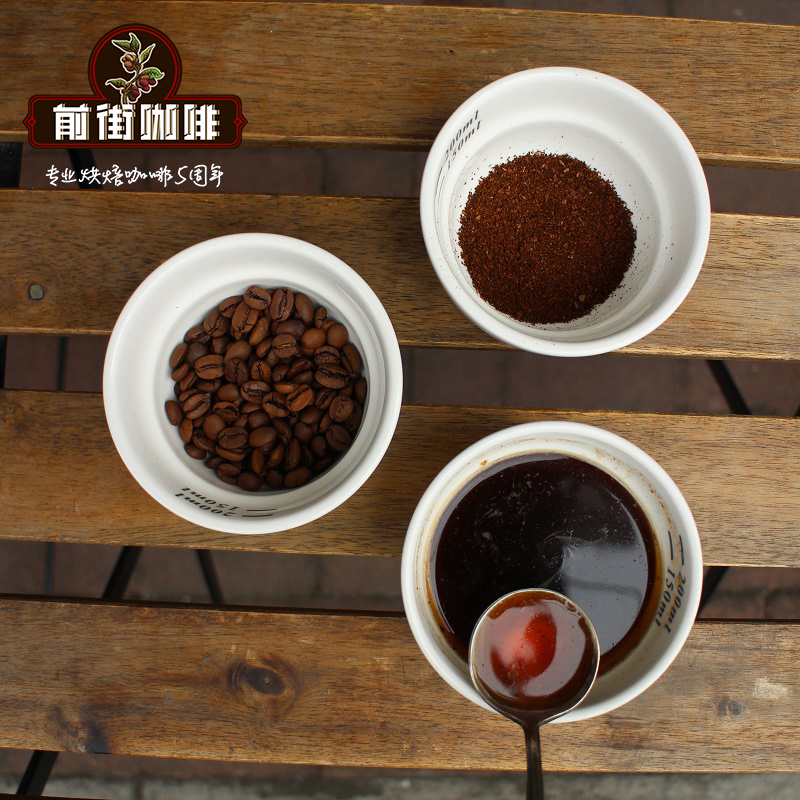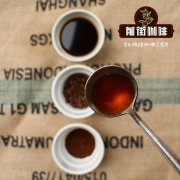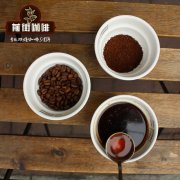The revival history of pointy bourbon? Sharp bourbon features and price? The Japanese revive the pointy bourbon?

Professional coffee knowledge exchange more coffee bean information please follow the coffee workshop (Wechat official account cafe_style)
The revival history of pointy bourbon? Sharp bourbon features and price?
With regard to the flavor of pointed bourbon, I will finally talk about the caffeine content of pointed bourbon. According to statistics, the caffeine content of general coffee beans is 0.9-1.2% in Arabica, 1.6-2.4% in Robasta, and 0.6% in sharp bourbon, which is much lower than ordinary Arabica coffee and much lower than Robasta. Although it does not meet the American standard of decaffeinated coffee (Decaffeinated coffee), it is already a boon for many people who can't stand too much caffeine but love it.
Because of its good flavor and low caffeine content (which does not affect sleep), sharp bourbon has been popular as early as the 18th century, with many celebrities, such as French King Louise 15, and the novelist Balzac is a "fan". During the two hundred years of the 1819th century, sharp bourbon was widely planted on the island of Bourbon, and its annual production reached a peak of 4,000 metric tons in 1800, but then a series of disasters such as hurricanes, fire ants and leaf rust followed, and the planting decreased. Finally, in 1942, the last batch of sharp bourbon was shipped back to France, leaving only a pitiful 200 kilograms, and since then, the sharp bourbon disappeared without a trace. Even the official documents are no longer mentioned. After the 1950s, coffee was no longer grown on the island of Reunion, and agriculture on the island turned completely to other crops such as sugar cane. Coffee was no longer associated with the island of Reunion, while sharp bourbon was recognized by the coffee industry as "extinct."
The reappearance of pointed bourbon is the legend of this article, which can be attributed to a Japanese coffee expert, Yoshihiro Kawashima (Jose Yoshiaki Kawashima).
Mr. Kawashima was born in 1956. Because his father runs a coffee roasting business, it can be said that he grew up in a coffee environment. In 1975, after graduating from high school, he was sent by his father to El Salvador, where he had business contacts, to study in the economics department of the university, but Kawashima was actually interested in coffee rather than economics, so he spent a lot of time studying coffee. He even gave up his studies in economics in order to go to the "National Coffee Institute" to study coffee. His father, who learned of this, stopped financial support from Kawashima in a rage. But Kawashima did not change his mind, traded his work as a translator for living expenses, worked part-time and continued to study coffee until 1981, when civil war broke out in El Salvador when he was 25 years old.
During his stay in El Salvador, Kawashima heard from experts at the National Coffee Institute that sharp bourbon was famous. Although the experts thought that sharp bourbon was extinct, he cherished the dream that "maybe we can still find it."
After returning to China, he joined the UCC Coffee Company, worked in the agricultural research department, and served as the supervisor of UCC's overseas planting sites, including Jamaica, Hawaii, Sumatra, etc. In 1999, when I went on a business trip to East Africa, I paid a visit to the neighboring island of Reunion and asked local people to accompany me in the search for a possible remnant of the sharp bourbon. He found that many of the young people on the island did not even know that Reunion used to be an important coffee producing area in history, and that this is where the famous "bourbon" variety originated. According to Kawashima's recollection, a young man once took him to the supermarket and thought he was looking for coffee beans on the shelf.
A short day of search, but did not get any results, Kawashima returned to Japan disappointed, thinking that his dream was finally dashed. But two years later, a local veterinarian who had accompanied him in his search for sharp bourbon found 30 coffee trees in the field and immediately informed Kawashima. Kawashima rushed to Reunion immediately and confirmed that the 30 coffee trees were correct after supervision. Finally, in cooperation with UCC and French officials, after five years of restoration, a preliminary result was achieved in 2007: 700kg of raw coffee beans. UCC selected 240kg of which was shipped back to Japan, roasted ripe beans, in 100g units, a total of 2000 units, each unit 7360 yen (more than two thousand Taiwan dollars! The "sky-high price" was sold out as soon as it went public. In the second year, it rose to 8750 yuan per unit, and coffee shops sold coffee gluttons at a high price of 5250 yen per cup of coffee. Mr. Kawashima, who started the legend and brought sharp bourbon back to the world, left UCC in 2007, the same year when it was listed, to set up his own company and set up Japan's Sustainable Coffee Association (Sustainable Coffee Association).
Important Notice :
前街咖啡 FrontStreet Coffee has moved to new addredd:
FrontStreet Coffee Address: 315,Donghua East Road,GuangZhou
Tel:020 38364473
- Prev

The source of the pointed bourbon? What are the characteristics and flavor trends of the pointed bourbon species?
Professional coffee knowledge exchange more coffee bean information please follow the source of the pointed bourbon of the coffee workshop (Wechat official account cafe_style)? What are the characteristics and flavor trends of the pointed bourbon species? In the sharp bourbon of the island of Reunion, this ordinary prose may not be attractive to ordinary people, but in the eyes of any coffee player, his heart beats faster and his blood boils. Why?.
- Next

The birthplace of pointed bourbon, the island of Reunion? Will caffeine be lower than Arabica? What are the characteristics?
Professional coffee knowledge exchange more coffee bean information please follow the coffee workshop (Wechat official account cafe_style) pointy bourbon birthplace Reunion Island? Will caffeine be lower than Arabica? What are the characteristics? The natural extremely low caffeine, sparse, delicate and charming aroma of pointed bourbon is one of the oldest tree species in the world, and Japanese coffee leader UCC is crazy about it.
Related
- Detailed explanation of Jadeite planting Land in Panamanian Jadeite Manor introduction to the grading system of Jadeite competitive bidding, Red bid, Green bid and Rose Summer
- Story of Coffee planting in Brenka region of Costa Rica Stonehenge Manor anaerobic heavy honey treatment of flavor mouth
- What's on the barrel of Blue Mountain Coffee beans?
- Can American coffee also pull flowers? How to use hot American style to pull out a good-looking pattern?
- Can you make a cold extract with coffee beans? What is the right proportion for cold-extracted coffee formula?
- Indonesian PWN Gold Mandrine Coffee Origin Features Flavor How to Chong? Mandolin coffee is American.
- A brief introduction to the flavor characteristics of Brazilian yellow bourbon coffee beans
- What is the effect of different water quality on the flavor of cold-extracted coffee? What kind of water is best for brewing coffee?
- Why do you think of Rose Summer whenever you mention Panamanian coffee?
- Introduction to the characteristics of authentic blue mountain coffee bean producing areas? What is the CIB Coffee Authority in Jamaica?

